Just Grow Food: Garden Site Prep
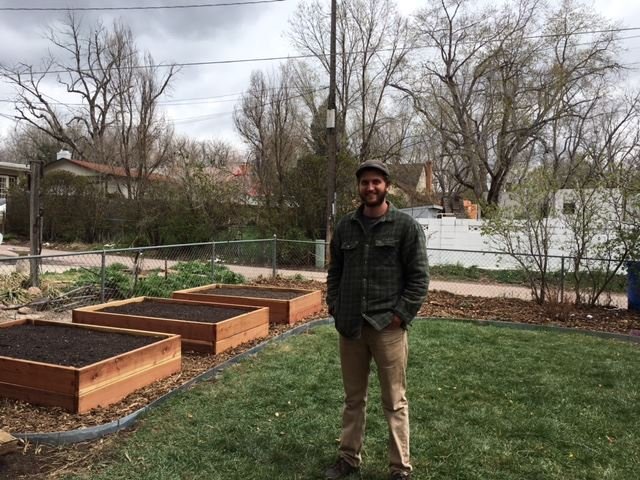
Growing food can be as easy or hard, relaxed or intensive, cheap or expensive as you would like to make it. My advice in this article will be geared towards a total gardening beginner who is willing to put at least a little work into their garden and would like to feel proud about what they have created by the end of a season. If you have ever walked through a library or bookstore, I am sure you have seen an overwhelming variety of gardening books claiming they have the 10 best secrets to making your garden flourish, or the 15 steps to a perfect garden. I won’t waste your time by trying to sell you on my gardening habits or perspectives above others because gardening is different in every climate, for every gardener, and for every plant. I will attempt to get you started by giving you a few essential bite-size pieces of knowledge involving your potential garden site that are true in every climate and for every gardener.
Before I begin, I must give you a little disclaimer. I am not a botanist or horticulturalist, I do not hold any gardening degrees or certifications. I am simply a hard working man who has had his hands in the dirt growing wide varieties of food for multiple years and have learned a substantial amount about garden site preparation from my experience.
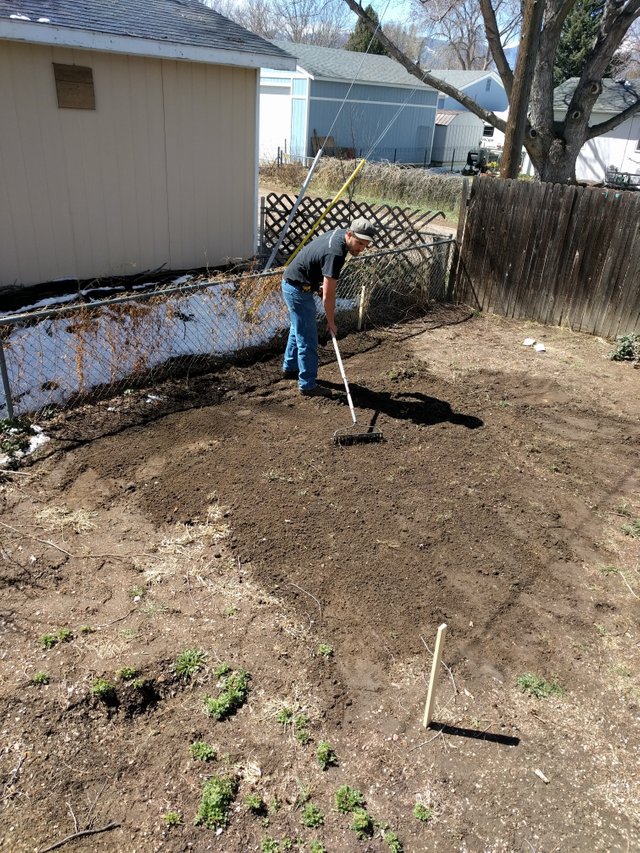
I propose there are THREE KEY CONSIDERATIONS when considering a site to start your food garden in. You must consider Water, Sun, and Soil.
WATER: The most important detail is making sure you can supply your garden with the correct amount of water. If you live in a place with high humidity and a lot of rainfall, you won’t have to water as much yourself, maybe none depending on what you are growing and how wet your area is. But generally, you will need to have a way to manually water your garden. I encourage you to research on google or at your local library the water needs of the specific plants you are wanting to grow, but the general water needs of almost all veggies, fruits and grains are these: when plants are still seeds or just sprouting, they need frequent, gentle watering (once or twice a day, depending on rainfall, heat, etc). Long periods (a day or more) of dryness can easily kill most plant seedlings. As plants grow, heavier and less frequent waterings (once every two-three days, depending on rainfall and heat) are generally best for plant health. If you continue to give a mature plant small waterings frequently, its roots will stay close to the surface of the soil and will not grow deep and retrieve nutrients and water deeper in the soil. Heavier and less frequent waterings are particularly important for perennial plants (plants that don’t require yearly planting and go dormant during winter). So make sure you have access to usable water when considering your garden site.
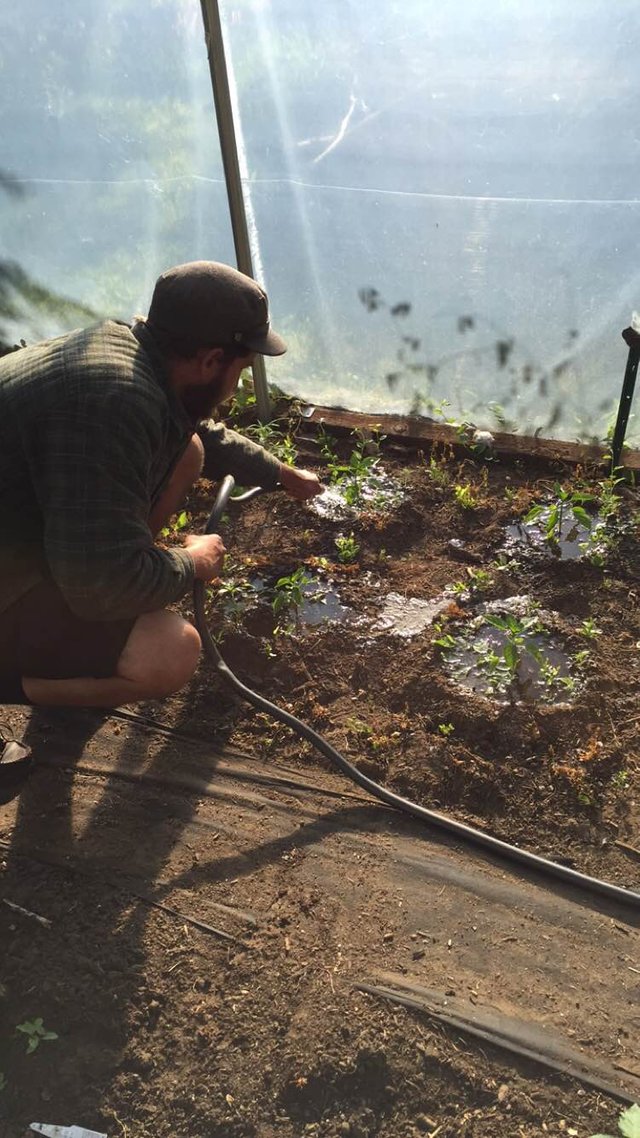
SUN: In the Northern Hemisphere, the sun is brightest in the southern sky. Some food producing plants need more sun than others, but most fruits, grains, and veggies need a substantial amount of sun. So if your garden site is on the southern side of your house, or has very few light obstructions to the south of it, your site is ideal in terms of sun. If your site does have a lot of sunlight obstruction and is shady most of the day, you can still grow food but not quite as many varieties of it as you may like. “Cold Crops” (broccoli, cabbage, most leafy greens) and some fruits (currant, some strawberry and apple varieties) will be your better bet for a shady garden than most other food producing plants.
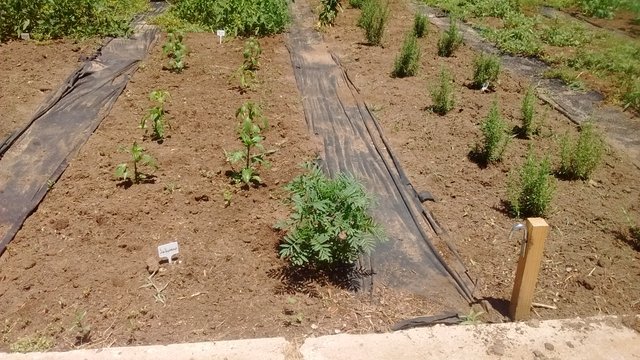
SOIL: Of the three big garden site considerations, soil can be the trickiest. It is what some people make their career out of, studying soil composition and biology. But like I have said multiple times, it can be made as complicated or as simple as you want to make it. Many food producing plants can survive in very poor soil, so don’t fret too much at first over your soil’s quality. None-the-less, if you know the basic terms and meanings about 1. your Soil Texture, and 2. Organic Material, it will help you greatly in determining what your soil needs.
Soil Texture: There are four main terms used to define different soil texture: sand, silt, clay, and loam. They simply mean the size of the soil particles; sand means coarse large particles, silt is slightly finer particles, clay is the finest smallest particles, and loam is a balanced mixture of all three. Loam soils are the soil of choice for a majority of vegetables and fruits, but that doesn’t necessarily mean that you can’t grow what you want to grow if you don’t have loam. Telling the difference is fairly easy. Start by grabbing a handful of soil and feeling its texture. Sandy soil is the easiest to identify, think of the beach. When you squeeze the soil, it feels gritty, it doesn’t clump together, and it simply runs out of your fingers. Clay soil is the opposite. When you squeeze a clay soil in your hand, it feels sticky, it clumps together and compacts, especially when wet. Silt is the halfway between these, and loam is a soft airy soil, when you squeeze it in your hand it clumps together some but falls apart easily. Amending your soil and improving its texture and “structure” (how the particles in soil clump together) is very possible and a regular practice in gardening. Also, a little research into your desired plants’ soil needs can go a long way. For example, in Colorado Springs, we basically either have sandy soil or clay soil. Sandy soil has low water retention since it is made up of larger coarser particles, and water runs through it easily. Clay soil has high water retention because it is made up of very fine particles which can make it difficult for water to run through it. BUT, if I was to research my desired plants’ soil needs before I tried to change my soil composition, I could save myself a lot of work and money. Grapevines, for example, will do well in sandy soils because they like “well-drained soil” (they don’t like waterlogged soil around their roots for very long). So instead of buying or making soil amendments that help retain moisture, such as sphagnum peat moss for example, I would plant my grapevine in the sandy soil and just make sure I give it enough fertilizer or organic material as it grows, which brings me to the next soil topic.
Organic Material: This term refers to material in soil that has come from living organisms. I won’t overstep my bounds here and act like I am a biologist, but basically as material that has come from plants and animals breaks down and decomposes in soil, currently living plants in the soil uptake nutrients from the decaying organic material. All plants need at least some organic material in their soil, and most food producing plants like to have a large supply of it. So unless you are lucky enough to have a loam soil that is packed with decomposed plant matter, you will want to amend your soil with some organic matter before you plant. Two big words to look for when getting organic matter at your local garden center or nursery are compost and manure. Some of my personal favorites of these two are “mushroom” compost and “sheep” manure.
Already I have said too much about soil for an introductory article to garden preparation. If you are interested in having ideal fertile soil, I highly recommend you take a small sample (maybe a quart) of your soil into a local nursery or garden center to have them help you identify what your soil is made up of, and what it may need to grow food. Or even ask a friend with gardening knowledge take a look at your soil to help you identify these characteristics. I encourage you to do research of your own in this area.
There is a bottomless well of knowledge to be gained about growing food, but if you just want to get started and see what your garden site can produce without studying a text book, I believe you can get started pretty well as long as you consider those three things and how they might affect the plants you want to grow. Never be afraid to just try it. The attempt to grow food is a healthy and life-giving process of its own, no matter what the outcome is.
Just grow food, folks.
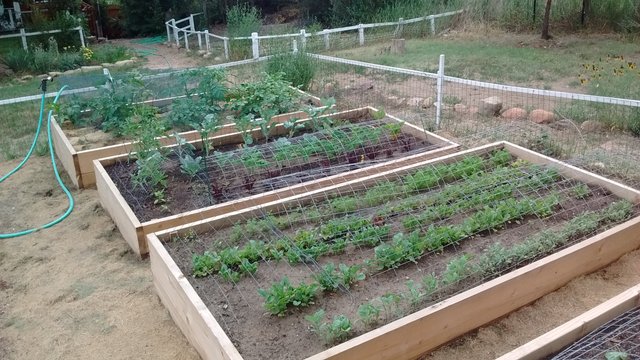
P.S. your upvotes will help Brown’s Greens buy a very much needed truck :)
HEY! I love your posts, no joke. Here's a little thing that I wrote that will help you out, i hope, for your future, or even this post to be more readable. If you care for all that : https://steemit.com/steemit/@razvanelulmarin/help-me-upvote-you
Keep it up and..just grow some food, man!! <--- great motto!
Great job. Nothing better than eating food that you've grown. Have you ever heard of Mike Adams the Health Ranger? Here's created a very effective way to grow vegetables in your home with no electricity and very little water. Keep on Steemin my friend you got my Upvote....
Thank you for your post.
Yesterday I ate my very first home-grown vegetable and I was like: I should make a post about my novice-vegetable garden! (which will be posted soon)
Then I thought: lets's find out what Steemit allready has on this subject and I found yours. Thank you for the advice and keep up the good work!
You have a new follower.
hey man check out what I do https://steemit.com/gardening/@rimann/we-built-a-business-out-of-our-love-for-gardening-and-i-wan-t-to-share-it-with-you
Check out the links at the bottom of the page, feel free to contact us if you ever have any questions. We were helped out a lot when we started i'll gladly pay it forward.
P.S. its not very powerful but you got my upvote
Hey there, looks like you guys a a pretty incredible operation going! Where are you guys located? I LOVE the wicking garden site, what a brilliant idea.
I appreciate it, we are in Missouri. Were is your operation?
Colorado Springs, Colorado!
Nice work, i guess by you name your are leaning towards greens, or is that green as the plant color in general?
Good luck with your crops, and keep on planting!